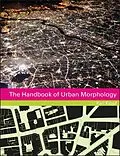Conceived as a practical manual of morphological analysis, The Handbook of Urban Morphology focuses on the form, structure and evolution of human settlements from villages to metropolitan regions. It is the first book in any language focused on specific, up-to-date how-to guidance , with clear summaries of the central concepts, step-by-step instructions for carrying out the analysis, case studies illustrating specific applications and discussion of theoretical underpinnings tied to evidence from the field. Ideal for students as well as professionals and academics dealing with the built environment.
Autorentext
The Author
Karl Kropf is Director of urban design consultancy Built Form Resource and Senior Lecturer at Oxford Brookes University. He has more than thirty years of experience in the fields of urban design, landscape architecture, architecture and historic conservation, working in the UK, France and the US. He combines academic research in urban morphology and practice in urban design with the aim of using insights from one to improve the other.
Klappentext
The Handbook of Urban Morphology
Karl Kropf
Urban morphology is a core discipline for both academic research and professional practice in a range of fields including urban design, architecture, planning, geography, archaeology and anthropology. It plays a central role in improving our understanding of the built environment as a diverse, complex structure that is the product of ongoing social processes and serves as our own habitat.
Conceived as a practical manual of morphological analysis, The Handbook of Urban Morphology brings together in one place the core concepts and principles of the discipline; specific, up-to-date guidance on analytical methods with clear step-by-step instructions and case studies demonstrating specific applications in research and professional practice. Illustrative material includes examples from Iran, China, Turkey, Brazil, France, Italy, the UK and the US, with case studies covering applications in theoretical morphology, environmental performance, historical characterisation, socio-cultural investigations, planning and design.
The result lays the foundation for taking forward and reconciling what might seem to be different views of urban form. It provides a common basis for seeing the built environment as a quasi-natural, emergent phenomenon, the material and medium of urban design, a repository of embodied ideas and the cultural expression of the societies that produce it.
Zusammenfassung
Conceived as a practical manual of morphological analysis, The Handbook of Urban Morphology focuses on the form, structure and evolution of human settlements from villages to metropolitan regions. It is the first book in any language focused on specific, up-to-date 'how-to' guidance , with clear summaries of the central concepts, step-by-step instructions for carrying out the analysis, case studies illustrating specific applications and discussion of theoretical underpinnings tied to evidence from the field. Ideal for students as well as professionals and academics dealing with the built environment.
Inhalt
2 Introduction
Slowing down the normative impulse
12 Part 1 Principles
14 1 Core Concepts 16 2 Origins and Approaches 20 3 Aspects of Urban Form 38 4 Minimum Elements
48 Part 2 Methods
50 5 The General Process of Analysis 58 6 Desktop Analysis 116 7 Field Survey 132 8 Synthesis
174 Part 3 Applications
176 9 Case Studies
230 Conclusion
232 Appendix
234 Further Reading
236 Illustration Credits
237 Index
